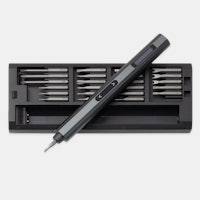Click to view our Accessibility Statement or contact us with accessibility-related questions


PRODUCTS YOU MAY LIKE
Trending Posts in More Community Picks

Graham88
Completely surprised by the lack of blade diversity here on Drop...
I’ve been a collector of Blades since before my teens, and a retailer coming up on 15… or maybe 20 years. Drop has really been kind of an interesting experience for me, because I do occasionally get to see some unusual tech and sometimes EDC items that otherwise I might not have been aware of. And maybe it’s because I have a deep love of cutlery and bladed weapons, but I find myself trolling through the site looking at it what’s available; and it’s just it’s pretty much the same. And the bladed community here is just always confused me.. every single knife is about the same, they’re almost all drop points and although the handle materials change and brands change.. it’s really just the same knife over and over and over again... occasionally you’ll see a tanto or a slight variant; but rarely… and almost never a serrated blade. And I’m just deeply amazed at this diversion of serrated blades. And I’m just surprised there isn’t more of a request for diversity here.... and I...
Mar 12, 2020
JellyDPhoto
Can we get Sony E-Mount or other mirrorless camera options please..
Would be nice to see some Sony E mount full frame cameras on here. I currently shoot with a A99 and they killed the lense path for better or more option lenses and now is all E-Mount. 🤔
Jan 13, 2020
RayF
There Are Pandas, and Then There Are Pandas.
And this isn't either of them! The Pandas we're talking about here, are watches, not bears. And what got me thinking about them (again) was a link posted this morning by @cm.rook who pointed a few of us to the very attractive (and not terribly priced) Yema "Rallygraph" Panda which, in it's most traditional arrangement, looks like the one on the left, but can also be had in the version on the right: The model on the left is a true Panda, while the model on the right is called a reverse Panda. The reason for that distinction is clear--Panda bears, only come in the first arrangement. Now at this point, everyone should be thinking about the most well-know Panda, The Rolex Panda, which is actually a Daytona, and among Rolex Daytonas, the most famous of which is the Paul Newman Daytona, which was famous first, because it was Paul's, and second because it sold at auction for $17.8 million (US Dollars). The story of that auction is well-known so I'll only...
Nov 8, 2019





https://www.srmknives.com/product/9211/
https://www.srmknives.com/product/9201/
Drop should totally see if they can source these. LOL too late, a very large internet based retailer named after a large river and vanishing jungle in South America has them. The thin curving ones appear to be 8Cr13MoV and the ones with blade apertures are D2. Neither are my first choice for a knife steel but D2 wears very slowly and 8Cr steels when heat treated just so can be fine knife steel. Today 8Cr13 or 14MoV is kinda close to the bottom of acceptable steels, which means inevitably that some people will mention its flaws and others outright disparage it. The only 'alloy' material that steel used to have was whatever carbon it took in and whatever trace elements were in the original ore as it was mined and then smelted down. It wasn't until later that people started trying to incorporate other elements, like in the production of wootz that made the reputation of Damascus steel and the janissaries that carried them so formidable, but aside from that, it was all about the ore and the mix of alloying elements and the types of carbides they might form with the incorporated carbon and how the local smithing techniques might work to best accentuate the resulting steel. Truth: a well made 8Cr sword would probably own ass on the best Japanese nihonto ever forged in those times. To us it's budget steel but it's a far purer and stronger and springier steel than even the very best steel makers could make back in the old days anywhere in the world. If you brought some billets of it to the master smiths of the old world, they'd have thought it magic steel, and swords made of it would have been thought magic swords. Nihonto were made from tamahagane which is smelted from iron sand, and despite the near holy attitude people get about Japanese swordsmithing, the iron sand they used to smelt was filled with impurities, and one can even argue that the reason the Japanese came up with advanced techniques to work with steel is that they had to in order to get any performance out of tamahagane.